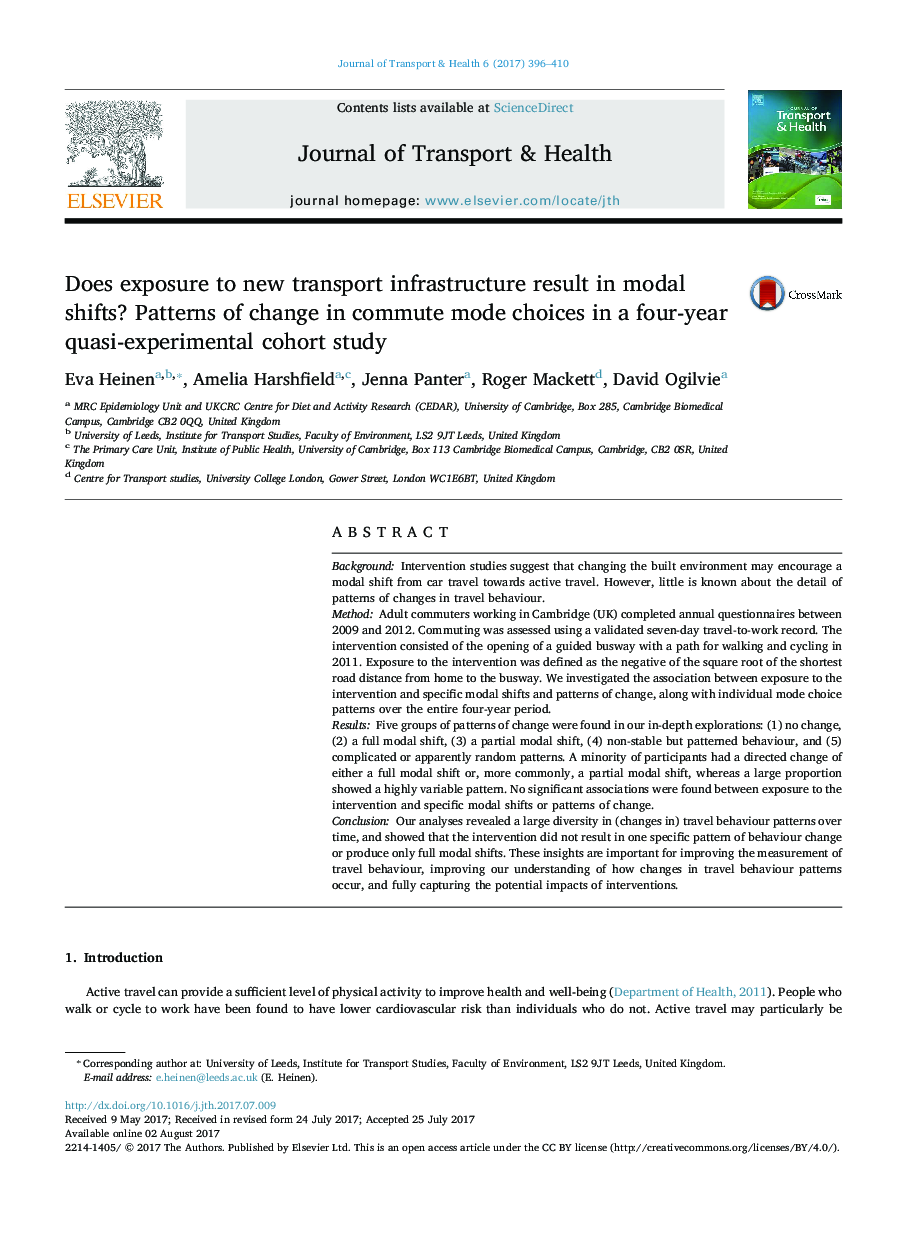| کد مقاله | کد نشریه | سال انتشار | مقاله انگلیسی | نسخه تمام متن |
|---|---|---|---|---|
| 5117676 | 1485455 | 2017 | 15 صفحه PDF | دانلود رایگان |
- We explored individual mode choice patterns in a 4-year cohort.
- Our analyses showed large variation in (changes in) travel behaviour patterns.
- A partial modal shift was more common than a full modal shift.
- A large proportion of our cohort showed a highly variable pattern.
- Our findings will help in fully capturing the potential impacts of interventions.
BackgroundIntervention studies suggest that changing the built environment may encourage a modal shift from car travel towards active travel. However, little is known about the detail of patterns of changes in travel behaviour.MethodAdult commuters working in Cambridge (UK) completed annual questionnaires between 2009 and 2012. Commuting was assessed using a validated seven-day travel-to-work record. The intervention consisted of the opening of a guided busway with a path for walking and cycling in 2011. Exposure to the intervention was defined as the negative of the square root of the shortest road distance from home to the busway. We investigated the association between exposure to the intervention and specific modal shifts and patterns of change, along with individual mode choice patterns over the entire four-year period.ResultsFive groups of patterns of change were found in our in-depth explorations: (1) no change, (2) a full modal shift, (3) a partial modal shift, (4) non-stable but patterned behaviour, and (5) complicated or apparently random patterns. A minority of participants had a directed change of either a full modal shift or, more commonly, a partial modal shift, whereas a large proportion showed a highly variable pattern. No significant associations were found between exposure to the intervention and specific modal shifts or patterns of change.ConclusionOur analyses revealed a large diversity in (changes in) travel behaviour patterns over time, and showed that the intervention did not result in one specific pattern of behaviour change or produce only full modal shifts. These insights are important for improving the measurement of travel behaviour, improving our understanding of how changes in travel behaviour patterns occur, and fully capturing the potential impacts of interventions.
Journal: Journal of Transport & Health - Volume 6, September 2017, Pages 396-410
